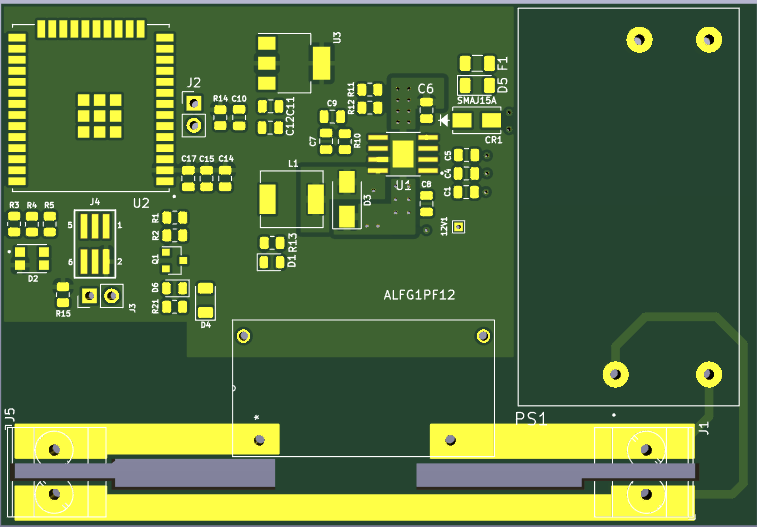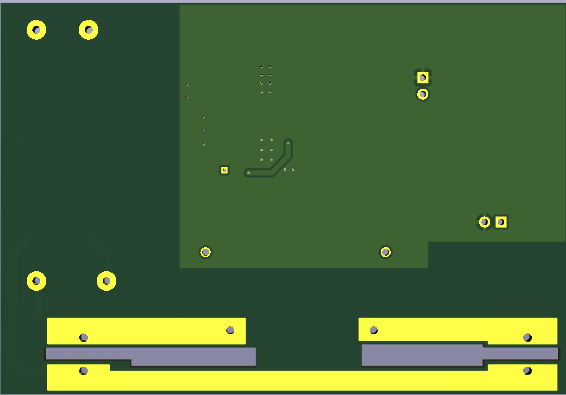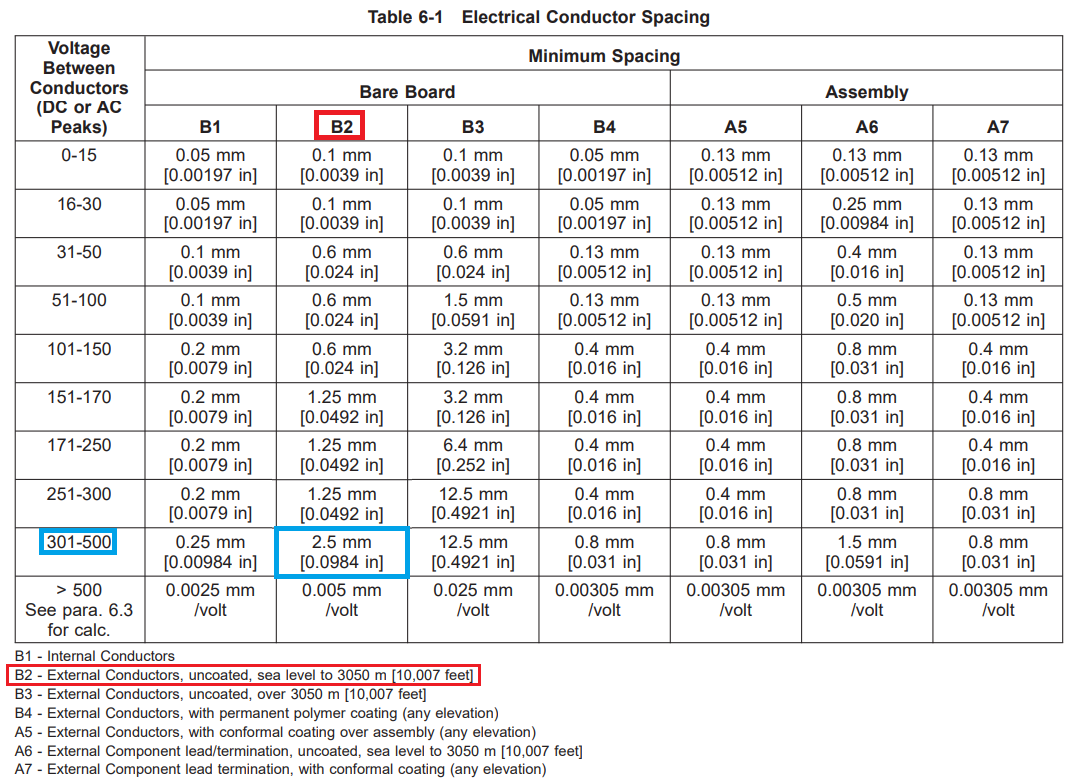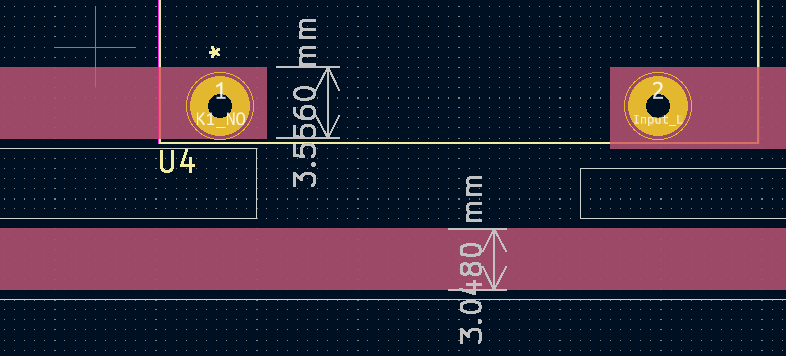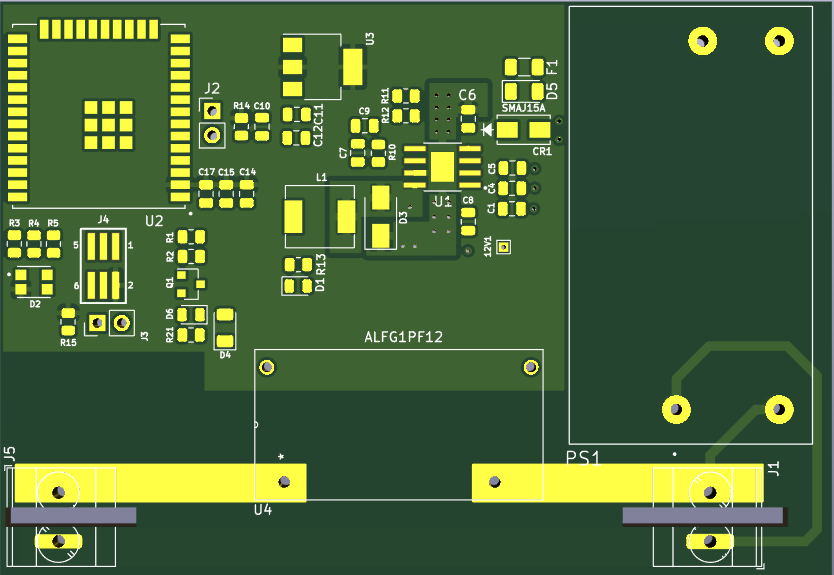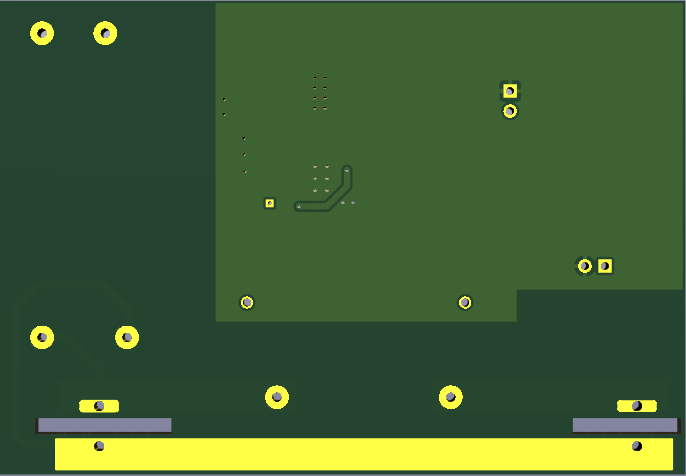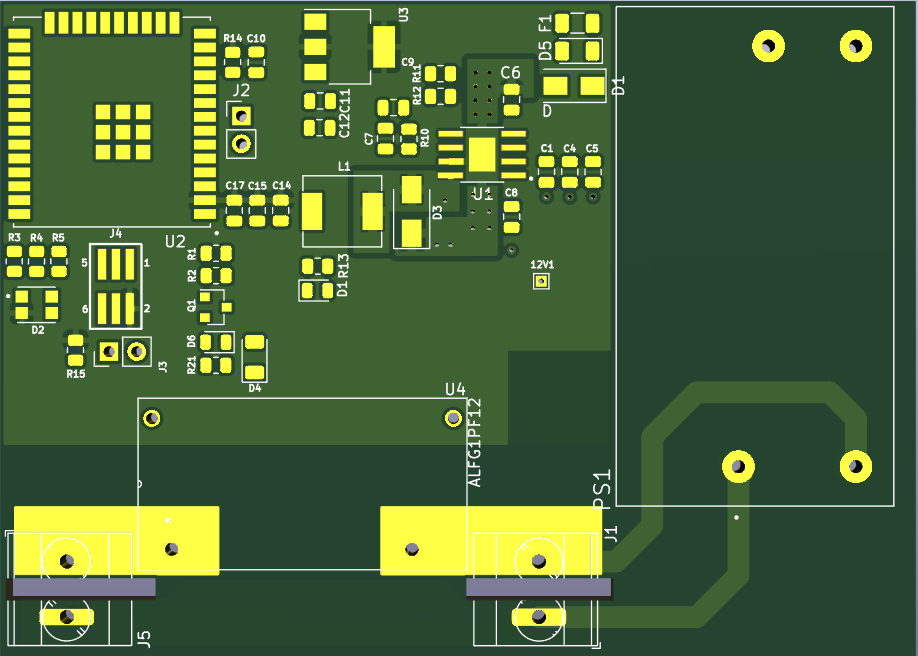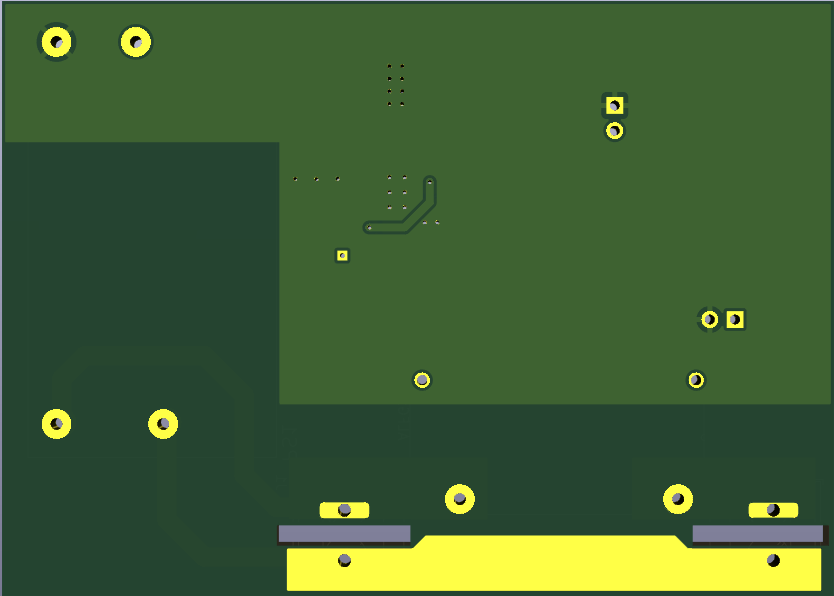Creepage
Consider two independent conductors on top and bottom. This is the side view near a board edge or slot:
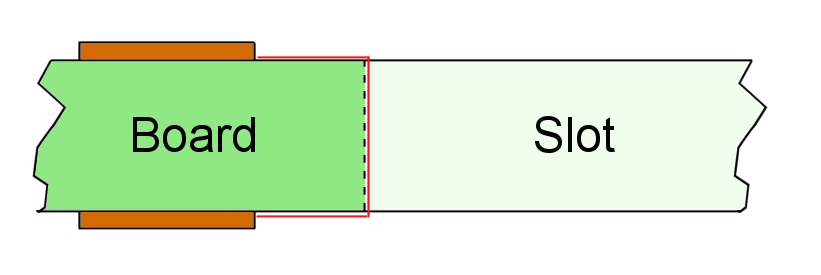 The red line is the creepage length.
The red line is the creepage length.
For two conductors on the same layer, slots are needed anywhere they would be too close otherwise (top view):
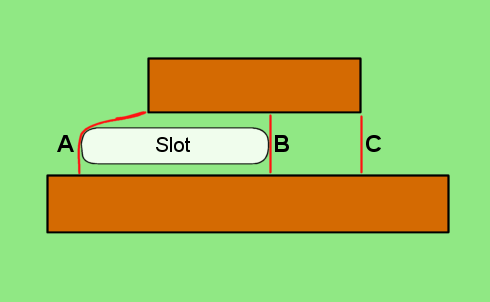
B and C are equal. The slot has no effect on creepage near it, only paths that would otherwise go through it. Because B and C are less than A, they set the creepage distance. The slot must be extended so that the shortest path is A-like on both ends.
Trace Width
IPC-2152 suggests around 350 mils (8.9 mm) for 14A at 20°C temp rise in 2 oz. (70 µm) copper. If you don't have this space to spare, bulking it up is a good idea.
If this is just a one-off, embedding wire or solder wick (as commented) is a fine solution.
Other options:
- Expand the PCB outline to fit enough copper width and clearance (can bring back two-sided conductors).
- Move the connectors to minimize trace length. Note that ampacity calculations assume infinite length traces. Shorter than a couple inches, heatsinking from the connections themselves is significant. For pads closer together than the trace width, width itself becomes meaningless, and ampacity becomes very high.
- For production, the cost premium of heavier copper or four layers may be justified by the compact outline, if that's the greater value. (Inner layers experience zero creepage and the clearance is much shorter, due to it being through a dielectric instead of air. A major downside is inner layers dissipate heat more poorly, so more width is needed.)
- Potting could also be used, but this is probably a specialty solution -- when the absolute smallest build is necessary, or very high voltages.
Other
Note that rout slots cannot have square inside corners. If you put them in the design, the fab will most likely choose the largest common end mill that fits, usually 1 mm radius. This won't affect the slots shown, but is something to keep in mind in general. To ensure you get what you are expecting, add inside corner radii to the shapes. Keep the radius on the large side; very sharp corners require very small cutters which work slower and break more easily -- added cost.


